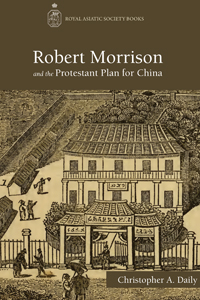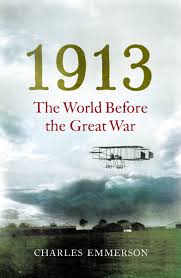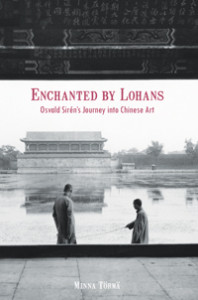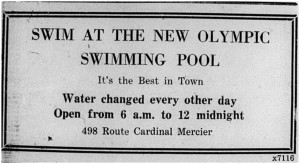Posted: August 19th, 2013 | No Comments »
Seems like there’s an ex-pat exodus from China at the moment with plenty of final, final, final essays, posts and whinges from half-baked laowai heading home to mum’s. Most of it is silly, a little of it self congratulatory and universally it’s boring as batshit – as all those leaving posts are self-referential they are by default dreary. Well, enough of that nonsense. I’m away for a while on holiday for a bit so thought I’d post a series of first impressions of Shanghai by various people from the 1840s up to the Second World War, all of whom are far more interesting than anyone complaining about a bit of bad air or spitting these days. Arriving in Shanghai during this century of change, by boat invariably, or occasionally overland, was to be staggered by the city (rather than moaning about the strength of the wi-fi signal and poor lattes)…..and so…
…a gallimaufry of writings upon arriving in Shanghai.
But first a little more introduction:
There’s something very special these days about stepping off a boat and arriving in a city for the first time, or even for a return visit. You don’t do it that often and usually now it’s at a remote location some distance from the city centre rather than in the pulsating heart of a metropolis. Many cities have historically allowed for a grand entrance to made by boat – the vats ports of London and Liverpool and Hamburg, the spectacular geographies of Gibraltar, Hong Kong and Yokohama; the teeming waterfronts of old Marseilles, Bombay and San Francisco while, of course, passing the Statue of Liberty to arrive at Manhattan was the dream of many a new world immigrant. These great cities not withstanding, Shanghai was probably the best place to arrive anywhere in the world. Whether you came in from the South China Sea all the way up the Huang Pu River to Pudong or transferred to a smaller craft for the final arrival right on the Bund, it is clear, as the reminiscences, in this book remind us, of how spectacular it must have been to arrive, disembark and then be swallowed up by the most teeming, modern and cosmopolitan city in the Far East. The shock to the senses was, over the years and across all those arriving, pretty immense, even for travellers relatively used to arriving in cities across Asia. Shanghai was then, as it is for many people now, just “more so†than most other places.
 Of course the craft they arrived on changed over the years, as did the Bund they arrived at. British Consul Rutherford Alcock, arriving in 1846, wouldn’t have recognised the Shanghai waterfront British soldier Ralph Shaw did when he arrived in 1937 with the Durham Light Infantry.
Tomorrow back to 1842….and an early arrival….

Â
Posted: August 18th, 2013 | No Comments »
Morrison was of course the man who launched the Protestant missionary assault on China where before it had basically been an all Catholic affair. Just how this theological and converting assault was planned is the subject of Christopher Daily’s new book….

Sent alone to China by the London Missionary Society in 1807, Robert Morrison (1782–1834) was one of the earliest Protestant missionaries in East Asia. During some 27 years in China, Macau and Malacca, he worked as a translator for the East India Company and founded an academy for converts and missionaries; independently, he translated the New Testament into Chinese and compiled the first Chinese-English dictionary. In the process, he was building the foundation of Chinese Protestant Christianity.
This book critically explores the preparations and strategies behind this first Protestant mission to China. It argues that, whilst introducing Protestantism into China, Morrison worked to a standard template developed by his tutor David Bogue at the Gosport Academy in England. By examining this template alongside Morrison’s archival collections, the book demonstrates the many ways in which Morrison’s influential mission must be seen within the historical and ideological contexts of British evangelism. The result is this new interpretation of the beginnings of Protestant Christianity in China.
Christopher A. Daily is a faculty member at the School of Oriental and African Studies (SOAS), University of London, and a Fellow of the Royal Asiatic Society of Great Britain and Ireland. He has held research fellowships from the East-West Center, University of Hawai‘i and the British Academy.
“Christopher Daily’s refreshingly original work turns Morrison’s role around to analyse it as the outcome of something hitherto ignored: the troubled search by British Dissenters for an effective missionary strategy and an appropriate missionary training. This carefully researched study is bound to become a landmark in the history of China, Britain, and the relations between the two countries.â€
―T. H. Barrett, Research Professor of East Asian History, SOAS, University of London, and author of Singular Listlessness: A Short History of Chinese Books and British Scholars
“Through a brilliant analysis of hitherto unexplored archival material, Christopher Daily offers important new insights into Robert Morrison’s missionary career at the gates of the Chinese Empire. This eminently readable book demonstrates with great clarity how the implementation of the Gosport ‘mission template’ was religiously observed by Morrison in an exceedingly hostile environment.â€
―R. G. Tiedemann, Professor of Chinese History, Shandong University, and editor of Handbook of Christianity in China, Vol. II
Posted: August 18th, 2013 | No Comments »
Without doubt you will not be able to forget next year that its the centenary of the start of the First World War – books, TV and God only knows what will remind you, you can bet on that. Traditionally, in amongst all those images of the trenches and battlefields of France and Belgium, China has been a rather forgotten element in the conflict. However, of course China was technically an allied power, sent the Chinese Labour Corps to Europe (or at least allowed them to be recruited by Britain and France), had problems of its own with Japan and ultimately refused to sign the Versailles peace treaty in 1919. There will be a lot on all that next year – hopefully I’ll be able to reveal some exciting plans around work on China and the Great War soon. However, before that worth noting that Charles Emmerson has got in early on the WW1 bandwagon with his book 1913 – The World Before the Great War.
1913 is essentially an overview of the world on the eve of war and does include a pretty useful chapter on the situation in Peking and Shanghai. I’m reviewing elsewhere so just the book jacket and blurb here but excellent that China is included. With a few notable exceptions there’s been a dearth of scholarship on China and the First World War though hopefully the centenary of the war will change that….

1913: The World before the Great War proposes a strikingly different portrait, returning the world in that year to its contemporary freshness, its future still undecided, its outlook still open. Told through the stories of twenty-three cities – Europe’s capitals at the height of their global reach, the emerging metropolises of America, the imperial cities of Asia and Africa, the boomtowns of Australia and the Americas – Charles Emmerson presents a panoramic view of a world crackling with possibilities, from St Petersburg to Shanghai and from Los Angeles to Jerusalem. What emerges is a rich and complex world, more familiar than we expect, connected as never before, on the threshold of events which would change the course of global history.
Forever in the shadow of the war which followed, 1913 is usually seen as little more than the antechamber to apocalypse. Our perspectives narrowed by hindsight, the world of that year is reduced to its most frivolous features – last summers in grand aristocratic residences, a flurry of extravagant social engagements – or its most destructive ones: the unresolved rivalries of the great European powers, the anxieties of a period of accelerated change, the social fear of revolution, the violence in the Balkans. Our images of the times are too often dominated by the faded pastels of upper-class indulgence or by the unmitigated blackness of a world rushing headlong into the abyss of an inevitable war.
Most retrospective accounts of the world in 1913 reduce it to either its most frivolous features – last bright summers in grand aristocratic residences – or to its most destructive ones: the rivalries of great European powers, rumbling social unrest in Russia and the angst of Viennese coffee houses. The portraits that result are dominated either by the faded pastels of aristocratic indulgence or the undifferentiated blackness of a world on the brink of the abyss. The true nature of the times – optimistic, modern and internationalist, as much as pessimistic, archaic and nationalist – is lost.
1913: The World before the Great War proposes a different and more expansive portrait of 1913, returning this world to its contemporary freshness. It brings key elements – the way it was ordered, its presumptions, its expectations for the future – back to life. It paints a coherent picture without skimming over differences, or ignoring contradictions. What emerges is unexpected: more richly patterned, more diverse and more outwardly secure. Through the stories of cities from Detroit to Bombay, Winnipeg to Durban, Tokyo to Algiers, Charles Emmerson reveals a year in which a truly global society was emerging for the first time in human history
CHARLES EMMERSON was born in Australia and grew up in London. After graduating top of his class in Modern History from Oxford University he took up an Entente Cordiale scholarship to study international relations and international public law in Paris. The author of The Future History of the Arctic (2010), he has also written numerous articles for a variety of newspapers, as well as speaking widely on geopolitics to university, literary, government and business audiences.He is a Senior Research Fellow at Chatham House (the Royal Institute for International Affairs).
Posted: August 17th, 2013 | No Comments »
Minna Torma’s new book on Osvald Siren fills some gaps in our knowledge of this man and his times….

Finnish-Swedish art historian Osvald Sirén (1879–1966) was one of the pioneers of Chinese art scholarship in the West. This biography focuses on his four major voyages to East Asia: 1918, 1921–23, 1929–30 and 1935. This was a pivotal period in Chinese archaeology, art studies and formation of Western collections of Chinese art. Sirén gained international renown as a scholar of Italian art, particularly with his books on Leonardo da Vinci and Giotto. But when he was almost 40 years old, he was captivated by Chinese art (paintings of Lohans in the Museum of Fine Arts in Boston) to such an extent that he decided to start his career anew, in a way. He has left his mark in several fields in Chinese art studies: architecture, sculpture, painting and garden art.
The study charts Sirén’s itineraries during his travels in Japan, Korea and China; it introduces the various people in those countries as well as in Europe and North America who defined the field in its early stages and were influential as collectors and dealers. It also explores the impact of theosophical ideas in his work.
Minna Törmä is Lecturer of Chinese Art at Christie’s Education London and School of Culture and Creative Arts, University of Glasgow; and Adjunct Professor of Art History at University of Helsinki.
“Osvald Sirén was one of Scandinavia’s most prominent art historians of the twentieth century. This carefully documented analysis of his philosophies, investigative approaches, and activities in Europe, America, and Asia, is a tour de force of historiographical scholarship, crossing cultures, mentalities, and geographies, and providing vital insights into the pioneering study of Chinese art.â€
—Kathryn Brush, University of Western Ontario
“Enchanted by Lohans is a scrupulously researched and detailed account of the engagement of Osvald Sirén with Chinese art in the dizzying cosmopolitan art world of the 1920s and 1930s. Absolutely essential for those interested in the formation of the field of Chinese art history.â€
—Stanley Abe, Duke University
Posted: August 16th, 2013 | No Comments »
I haven’t had a chance to read this book yet so can’t actually vouch the author has anything new to say on Shanghai or knows the city particularly well but this looks a potentially interesting new book by Daniel Brook, A History of Future Cities. The book is a collection of concise portraits of St. Petersburg, Russia; Bombay, India; Shanghai, China; and Dubai – Brook argues that these are all “instant cities” of the past in the way that Shenzhen and the like are today. Indeed, Brook argues, these cities were “dress rehearsals for the twenty-first century.â€Brook argues that, “Shanghai became the fastest-growing city on earth as it mushroomed into an English-speaking, Western-looking metropolis that just happened to be in the Far East” Of course there are longer and more detailed studies of Shanghai history and rise (recommended especially is Building Shanghai by Edward Denison and Guang Yu Ren) but this book may add some perspective….

A pioneering exploration of four cities where East meets West and past becomes future: St. Petersburg, Shanghai, Mumbai, and Dubai.
Every month, five million people move from the past to the future. Pouring into developing-world “instant cities†like Dubai and Shenzhen, these urban newcomers confront a modern world cobbled together from fragments of a West they have never seen. Do these fantastical boomtowns, where blueprints spring to life overnight on virgin land, represent the dawning of a brave new world? Or is their vaunted newness a mirage?
In a captivating blend of history and reportage, Daniel Brook travels to a series of major metropolitan hubs that were once themselves instant cities— St. Petersburg, Shanghai, and Mumbai—to watch their “dress rehearsals for the twenty-first century.†Understanding today’s emerging global order, he argues, requires comprehending the West’s profound and conflicted influence on developing-world cities over the centuries.
In 1703, Tsar Peter the Great personally oversaw the construction of a new Russian capital, a “window on the West†carefully modeled on Amsterdam, that he believed would wrench Russia into the modern world. In the nineteenth century, Shanghai became the fastest-growing city on earth as it mushroomed into an English-speaking, Western-looking metropolis that just happened to be in the Far East. Meanwhile, Bombay, the cosmopolitan hub of the British Raj, morphed into a tropical London at the hands of its pith-helmeted imperialists.
Juxtaposing the stories of the architects and authoritarians, the artists and revolutionaries who seized the reins to transform each of these precociously modern places into avatars of the global future, Brook demonstrates that the drive for modernization was initially conflated with wholesale Westernization. He shows, too, the ambiguous legacy of that emulation—the birth (and rebirth) of Chinese capitalism in Shanghai, the origins of Bollywood in Bombay’s American-style movie palaces, the combustible mix of revolutionary culture and politics that rocked the Russian capital—and how it may be transcended today.
A fascinating, vivid look from the past out toward the horizon, A History of Future Cities is both a crucial reminder of globalization’s long march and an inspiring look into the possibilities of our Asian Century.
Daniel Brook is the author of The Trap and a journalist whose work has appeared in publications including Harper’s, The Nation and Slate.
Posted: August 15th, 2013 | No Comments »
A quick reference to a rather charming little book by Mai-Mai Sze, Echo of a Cry: A Story Which Began in China (1947). Sze is best known and remembered today as the American based Chinese painter (she sadly died in 1992), writer and book jacket illustrator. However, Sze was born in China the daughter of Alfred Sze, the noted Chinese diplomat who was the Republic’s ambassador to London and Washington and attended the Versailles Peace Treaty in 1919 for China. Mai-Mai was educated at private schools in England and then Wellesley, graduating in 1931.
Echo of a Cry is her childhood memoir and has some nice reminiscences of London during World War One, life at the Chinese Legation on Portland Place, being the only Chinese girl at a private school in Sussex and then moving on to America. The book is also nicely illustrated with drawing by Sze. Unfortunately I don’t have a cover for the book.

Posted: August 14th, 2013 | No Comments »
It’s hot in Shanghai and those pictures of horrendously crowded swimming pools in the city make you wonder where exactly old Shanghailanders went for a swim to cool off?
Perhaps the Olympic Swimming Pool? It was on Route Cardinal Mercier (Maoming Road South now), which also had a pool up at the Cercle Sportif too. Nice to be able to swim till midnight and nice that water was changed every other day too!!

Posted: August 13th, 2013 | No Comments »
Following the RAS Shanghai China Monographs No.1 Lao She in London and No.2 Knowledge is Pleasure: Florence Ayscough in Shanghai, the third in the series, Andrew Field’s Mu Shiying: China’s Lost Modernist – New Translations and an Appreciation is now available for pre-order (it comes out January 1 2014)….

When the avant-garde writer Mu Shiying was assassinated in 1940, China lost one of its greatest modernist writers while Shanghai lost its most detailed chronicler of its demi-monde nightlife. As Andrew David Field argues, Mu Shiying advanced modern Chinese writing beyond the vernacular expression of May 4 giants Lu Xun and Lao She to even more starkly reveal the alienation of the cosmopolitan-capitalist city of Shanghai, trapped between the forces of civilization and barbarism. Each of these five short stories focuses on the author’s key obsessions: the pleasurable yet anxiety-ridden social and sexual relationships of the modern city and the decadent maelstrom of consumption and leisure in Shanghai epitomized by the dance hall and the nightclub. This study places his writings squarely within the framework of Shanghai’s social and cultural nightscapes.







